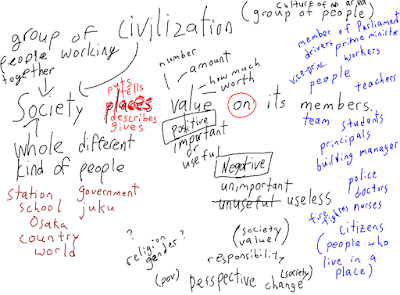This week we were invited to visit a couple grades and observe the summative projects. Grade 1 designed and build houses for to conclude their units. G5 students were quite impressed with G1's homes. Some of their comments:
"How did they build that?"
"They have such good ideas and they made them. I don't see how they made them."
"How did they build that?"
"They have such good ideas and they made them. I don't see how they made them."
"They are above grade 1 level."
"They are like William [Kamkwamba]. They built things from reused trash."
"I like that Mahamoud added a gas shop by his house."
"Yusuke's house had a pool and a garden." "Yuto's house was huge! I think if his house was real, it would be very expensive."
"I like that Mahamoud added a gas shop by his house."
"Yusuke's house had a pool and a garden." "Yuto's house was huge! I think if his house was real, it would be very expensive."
On Tuesday, we visited G2's Exploration Museum. These students chose any area where future exploration should take place. They created brochures and visual presentations to teach G5 students about why these areas should be explored, giving us the positives and negatives of the exploration, as well as what materials would be needed for their exploration. G5 students were blown away with their effort and the detail they put into this work.
Tuesday was also the day when G5 students talked one-on-one with me about their selected picture books that they read as part of their summative. Students shared lessons they learned from these books along with changes these people underwent as well as the changes these people had on the world. I was very impressed with how much they learned from these books!
This week we also began researching our International Children's Festival country: Saudi Arabia. The students have enjoyed learning about a new country and culture and creating photobooth props and finding images and maps for decorations of the PreK-B classroom. Tasneem is our in-class expert, who answers any of our questions, and her dad even helped us with the flag! :)
We read Beatrice's Goat by Page McBrier. During our reading of this book, students were given an assignment to think deeply about the story and generate LOTS of questions. I also asked them to write at least two life lessons this book teaches it readers.
This questions for the book gave us a natural opportunity to understand the "pattern" for writing questions in English. We also realized that correct helping verbs are essential in getting our meaning across to the reader.
We ended the week with analyzing our new central idea for our Sharing the Planet unit.
We try to allow time for art on Fridays after a long week. It's definitely a time each week that I anticipate because the students are taking a great deal of pride and ownership in creating beautiful pieces of art.






























